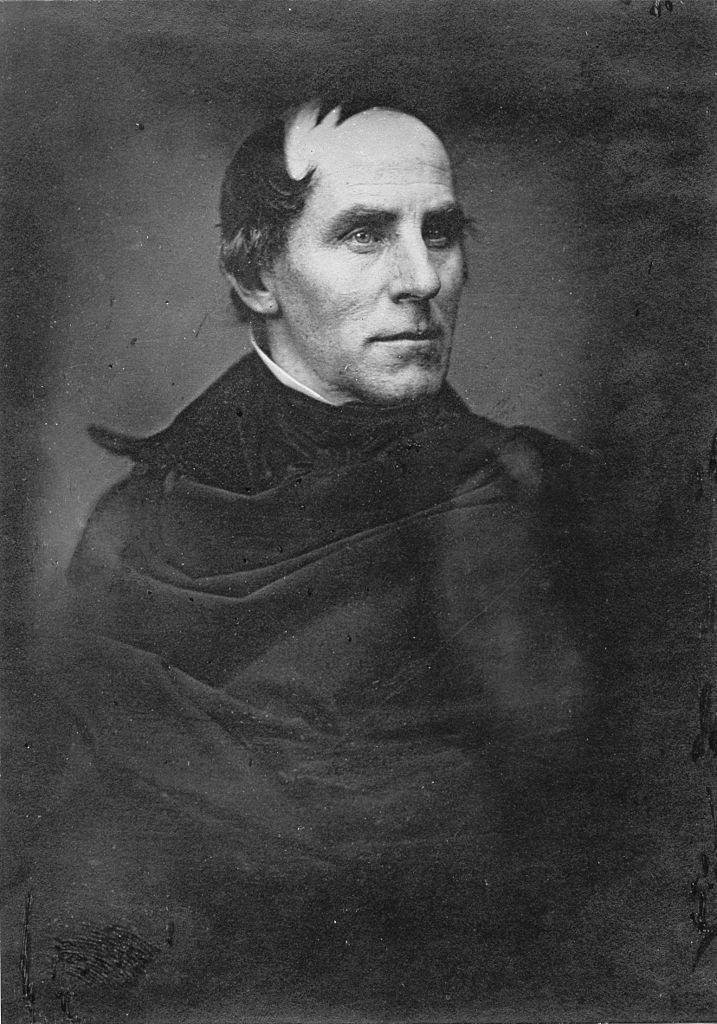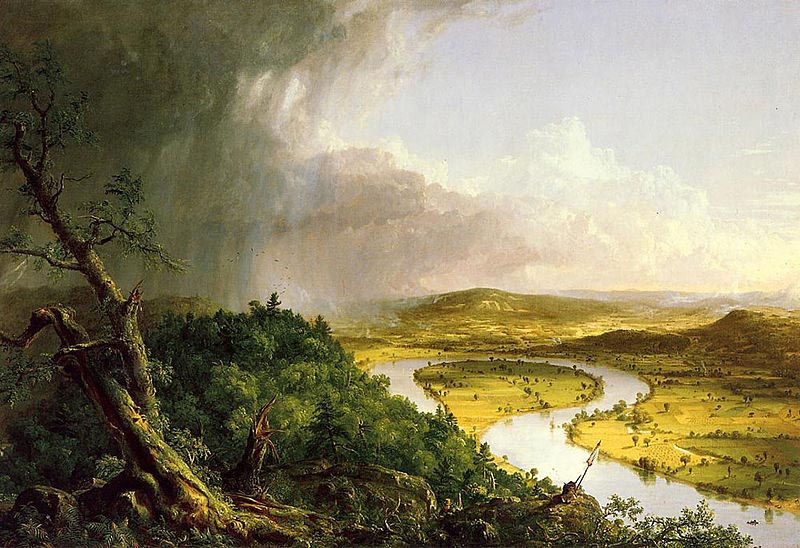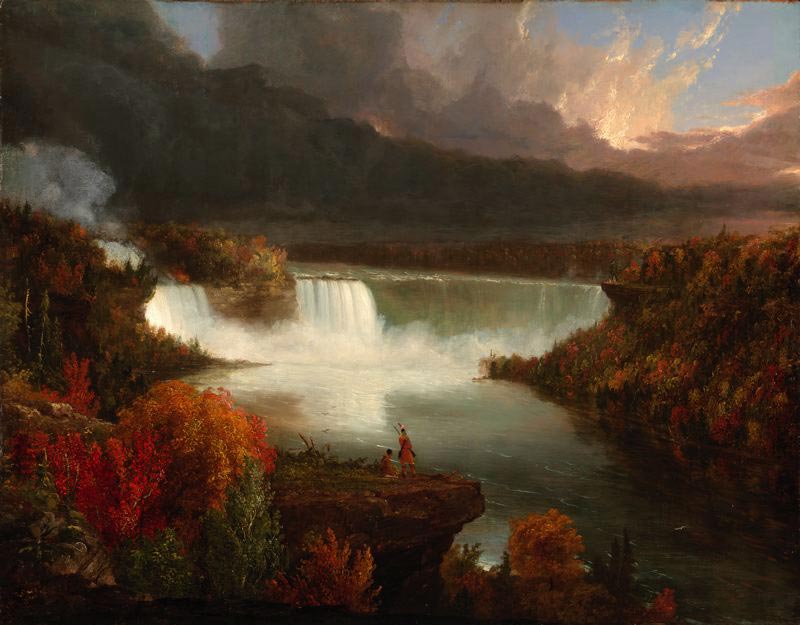| Thomas Cole | |
|---|---|
 |
|
| Born | Feb. 1, 1801 |
| Died | Feb. 11, 1848 |
| Nationality | English, American |
| Movement | Hudson River School |
| Field | Painting |
| Works | View Complete Works |
Thomas Cole (1801-1848) was primarily a landscape artist, who developed his style of painting from European art masters and by studying at the Pennsylvania Academy of Fine Arts. His sketches and paintings were of the Catskills, White Mountains, Adirondacks, and the coast of Maine, yet he also produced many allegorical works, painted in a series. Cole was the founder of the Hudson River School, an American art movement, which promoted realistic and detailed portrayals of American landscapes and its wilderness. Painting with a romantic and naturalistic style, Cole became a famous painter of landscapes and an important study of painting style to other artists.
Early Life
Thomas Cole was born in Lancashire, England, and in 1818, moved with his family to Steubenville, Ohio. Growing up, he had apprenticed with a wood engraver in England and had learned the basics of painting from Stein, a wandering portrait painter. Finding little success in portrait painting, Cole’s interests shifted to outdoor scenes, and landscapes. His family moved to Pittsburgh in 1823, and then to Philadelphia in 1824. Cole studied at the Pennsylvania Academy of Fine Arts, refining his painting techniques. In 1825, Cole moved to New York to reunite with his family who had since moved there.
 While in New York, Cole sold several of his paintings to George W. Bryen, who financed a trip to the Hudson Valley for him. While there, Cole produced Coldspring, The Ruins of Fort Putnam, The Catskill Mountain House, and Kaaterskill Falls. Cole displayed his oil and canvas paintings in a bookstore window, and they began selling. One of Cole’s purchasers, John Trumbull, put him into contact with a number of influential friends, including Daniel Wadsworth, who encouraged Cole to travel to the White Mountains, where he painted some of his most famous works.
While in New York, Cole sold several of his paintings to George W. Bryen, who financed a trip to the Hudson Valley for him. While there, Cole produced Coldspring, The Ruins of Fort Putnam, The Catskill Mountain House, and Kaaterskill Falls. Cole displayed his oil and canvas paintings in a bookstore window, and they began selling. One of Cole’s purchasers, John Trumbull, put him into contact with a number of influential friends, including Daniel Wadsworth, who encouraged Cole to travel to the White Mountains, where he painted some of his most famous works.
Artistry
Although painting nature was his first love, Cole also produced thousands of other sketches of varying material, and also tried his hand at architecture. Some of his famous paintings were Oxbow, Daniel Boone at his Cabin, The Notch of the White Mountains, Lake with Dead Trees, and The Garden of Eden. In 1842, Cole toured Europe, to study the style of the Master painters in history, and became enthralled with Mount Etna. A View From Mount Etna From Taormina, an ancient Greek theater, was painted then.
 Cole’s allegorical works included the five-part painting series, The Course of Empire, which depicted the changing of landscape over many generations, which is now in the New York Historical Society. He also painted the 4-part series, The Voyage of Life. Cole’s movement in art also made an influence on his artistic peers, such as Frederic Edwin Church, and Asher B. Durand, whom he studied art with from 1844-1846.
Cole’s allegorical works included the five-part painting series, The Course of Empire, which depicted the changing of landscape over many generations, which is now in the New York Historical Society. He also painted the 4-part series, The Voyage of Life. Cole’s movement in art also made an influence on his artistic peers, such as Frederic Edwin Church, and Asher B. Durand, whom he studied art with from 1844-1846.
After 1827, Cole worked mainly from his studio which he called Cedar Grove, located in Catskill, New York. In 1836, he married the niece of his studio’s owner, Maria Bartow, and had five children. In his later years, Cole’s works became increasingly centered around religion. In 1848, Cole died at the early age of forty-seven, and was buried at Thomson Street Cemetery, in Catskill. Cole felt it was his duty as an artist, to depict nature, the place in which he felt most comfortable.